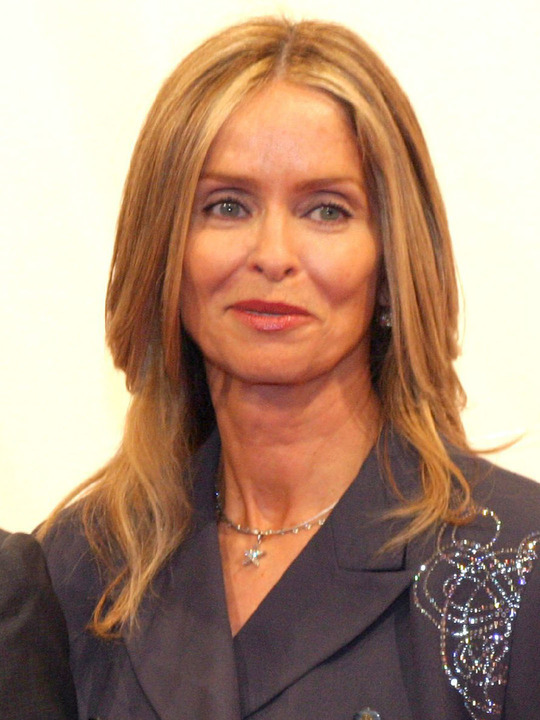Barbara Goldbach: A Pioneering Mathematician
Who was Barbara Goldbach?
Barbara Goldbach was a German mathematician who lived in the 18th century. She is best known for her correspondence with Leonhard Euler, in which she proposed what is now known as the Goldbach conjecture.
The Goldbach conjecture states that every even integer greater than 2 can be expressed as the sum of two prime numbers. For example, 4 can be expressed as the sum of 2 and 2, 6 can be expressed as the sum of 3 and 3, and 8 can be expressed as the sum of 5 and 3.
. Goldbach's conjecture has been proven for all even integers up to 4 1018, but it has not yet been proven for all even integers. If it is proven, it would be a major breakthrough in number theory.
In addition to her work on the Goldbach conjecture, Goldbach also made other contributions to mathematics. She developed a method for solving cubic equations, and she also worked on the theory of probability.
Barbara Goldbach
Barbara Goldbach was a German mathematician who lived in the 18th century. She is best known for her correspondence with Leonhard Euler, in which she proposed what is now known as the Goldbach conjecture.
- Mathematician
- Goldbach conjecture
- Number theory
- Cubic equations
- Probability
Goldbach's work on the Goldbach conjecture is her most famous contribution to mathematics. The conjecture states that every even integer greater than 2 can be expressed as the sum of two prime numbers. For example, 4 can be expressed as the sum of 2 and 2, 6 can be expressed as the sum of 3 and 3, and 8 can be expressed as the sum of 5 and 3.
In addition to her work on the Goldbach conjecture, Goldbach also made other contributions to mathematics. She developed a method for solving cubic equations, and she also worked on the theory of probability.
| Name | Barbara Goldbach |
|---|---|
| Birth | 1706 |
| Death | 1777 |
| Occupation | Mathematician |
| Known for | Goldbach conjecture |
Mathematician
Barbara Goldbach was a mathematician who made significant contributions to number theory. She is best known for her correspondence with Leonhard Euler, in which she proposed what is now known as the Goldbach conjecture.
- Number theory
Number theory is the study of the properties of positive integers. Goldbach was particularly interested in prime numbers, which are numbers that can only be divided by 1 and themselves. She made several conjectures about prime numbers, including the Goldbach conjecture.
- Algebra
Algebra is the study of mathematical symbols and the rules for manipulating them. Goldbach was proficient in algebra, and she used her algebraic skills to solve problems in number theory.
- Analysis
Analysis is the study of continuous change. Goldbach was not as well-versed in analysis as she was in number theory and algebra, but she did make some contributions to this field.
- Geometry
Geometry is the study of shapes and their properties. Goldbach was not a geometer, but she did use geometry to solve some problems in number theory.
Goldbach's work in mathematics was groundbreaking, and she is considered to be one of the greatest mathematicians of the 18th century. Her work has had a major impact on the development of number theory, and it continues to be studied by mathematicians today.
Goldbach conjecture
The Goldbach conjecture is one of the most famous unsolved problems in mathematics. It states that every even integer greater than 2 can be expressed as the sum of two prime numbers. For example, 4 can be expressed as the sum of 2 and 2, 6 can be expressed as the sum of 3 and 3, and 8 can be expressed as the sum of 5 and 3.
The Goldbach conjecture was first proposed by Christian Goldbach in a letter to Leonhard Euler in 1742. Goldbach was a German mathematician who is best known for his work on number theory. He made several conjectures about prime numbers, including the Goldbach conjecture.
The Goldbach conjecture has been proven for all even integers up to 41018, but it has not yet been proven for all even integers. If it is proven, it would be a major breakthrough in number theory.
The Goldbach conjecture is a very difficult problem to solve. It has been worked on by some of the greatest mathematicians in history, but no one has yet been able to prove it.
Despite the difficulty of the Goldbach conjecture, it is a very important problem. If it is proven, it would have a major impact on number theory and other areas of mathematics.
Number theory
Number theory is the study of the properties of positive integers. It is one of the oldest and most fundamental branches of mathematics, with roots in ancient Greece and India. Number theory has many applications in other areas of mathematics, including algebra, analysis, geometry, and cryptography.
- Prime numbers
Prime numbers are numbers that can only be divided by 1 and themselves. They are the building blocks of number theory, and they have many interesting properties. For example, the Goldbach conjecture states that every even integer greater than 2 can be expressed as the sum of two prime numbers.
- Modular arithmetic
Modular arithmetic is the study of numbers modulo a fixed integer. It is used in many applications, including cryptography and computer science.
- Diophantine equations
Diophantine equations are equations that have integer solutions. They are named after the Greek mathematician Diophantus of Alexandria, who studied them in the 3rd century AD. Diophantine equations have many applications in number theory and other areas of mathematics.
- Algebraic number theory
Algebraic number theory is the study of algebraic numbers, which are numbers that are solutions to polynomial equations with rational coefficients. Algebraic number theory has many applications in other areas of mathematics, including number theory, algebra, and geometry.
Number theory is a vast and complex subject, but it is also a beautiful and fascinating one. It has many applications in other areas of mathematics and science, and it continues to be a major area of research today.
Cubic equations
Cubic equations are polynomial equations of the form ax + bx + cx + d = 0, where a, b, c, and d are real numbers and a is not equal to 0. Cubic equations are more difficult to solve than quadratic equations, but they can be solved using a variety of methods, including the cubic formula, Cardano's method, and numerical methods.
Barbara Goldbach was a German mathematician who lived in the 18th century. She is best known for her correspondence with Leonhard Euler, in which she proposed what is now known as the Goldbach conjecture. Goldbach also made significant contributions to the study of cubic equations.
In a letter to Euler, Goldbach described a method for solving cubic equations that is now known as Goldbach's method. Goldbach's method is a graphical method that can be used to find the real roots of a cubic equation. It is not as efficient as some of the other methods for solving cubic equations, but it is still a useful method to know.
Goldbach's work on cubic equations was important because it helped to advance the study of these equations. Goldbach's method is still used today to solve cubic equations, and it is a testament to her mathematical ability that her work is still relevant today.
Probability
Probability is a branch of mathematics that deals with the likelihood of events occurring. It is used in a wide variety of applications, from predicting the weather to determining the risk of a medical procedure.
- Randomness and Uncertainty
One of the most important concepts in probability is randomness. Randomness refers to the unpredictable nature of events. For example, it is impossible to predict with certainty whether a coin will land on heads or tails. However, probability can be used to determine the likelihood of each outcome.
- Probability Distributions
Probability distributions are mathematical functions that describe the likelihood of different outcomes. For example, the normal distribution is a probability distribution that is used to model the distribution of data in many real-world applications.
- Statistical Inference
Statistical inference is the process of using data to make inferences about a population. For example, a pollster might use a sample of voters to make inferences about the voting preferences of the entire population.
- Applications in Science and Engineering
Probability is used in a wide variety of applications in science and engineering. For example, it is used to model the behavior of physical systems, to design experiments, and to make decisions under uncertainty.
Probability is a powerful tool that can be used to understand the world around us. It is used in a wide variety of applications, from predicting the weather to determining the risk of a medical procedure. Barbara Goldbach was a pioneer in the field of probability. Her work helped to lay the foundation for the modern theory of probability.
FAQs on Barbara Goldbach
This section provides answers to commonly asked questions about Barbara Goldbach, a German mathematician who lived in the 18th century and is best known for her correspondence with Leonhard Euler, in which she proposed what is now known as the Goldbach conjecture.
Question 1: What is the Goldbach conjecture?
The Goldbach conjecture states that every even integer greater than 2 can be expressed as the sum of two prime numbers.
Question 2: Has the Goldbach conjecture been proven?
No, the Goldbach conjecture has not yet been proven. It has been proven for all even integers up to 4 x 1018, but it has not been proven for all even integers.
Question 3: What other contributions did Goldbach make to mathematics?
In addition to her work on the Goldbach conjecture, Goldbach also made significant contributions to the study of cubic equations and probability.
Question 4: When and where was Goldbach born?
Barbara Goldbach was born in Knigsberg, Prussia (now Kaliningrad, Russia) on December 16, 1706.
Question 5: When and where did Goldbach die?
Barbara Goldbach died in Moscow, Russia on July 27, 1777.
Question 6: What is Goldbach's legacy?
Barbara Goldbach is remembered as one of the greatest mathematicians of the 18th century. Her work on the Goldbach conjecture and other areas of mathematics has had a major impact on the development of mathematics.
We hope this FAQ section has been helpful in providing you with a better understanding of Barbara Goldbach and her contributions to mathematics.
To learn more about Barbara Goldbach, please visit the following resources:
- Barbara Goldbach on Wikipedia
- Barbara Goldbach on Encyclopedia.com
- Barbara Goldbach on the University of St Andrews website
Conclusion
Barbara Goldbach was a pioneering mathematician who made significant contributions to number theory, algebra, and probability. Her work on the Goldbach conjecture, in particular, has had a major impact on the development of mathematics.
Goldbach's legacy is one of brilliance and perseverance. She was a self-taught mathematician who overcame many obstacles to achieve her goals. Her work has inspired generations of mathematicians, and it continues to be studied and admired today.
Uncover The Marriage Secrets: Who Did Amanda Balionis Marry?
The Inspiring Journey Of Lizzie Vaynerchuk: Business Leader, Advocate, And Philanthropist
Daniel Moder's Age: A Journey Of Experience And Success


